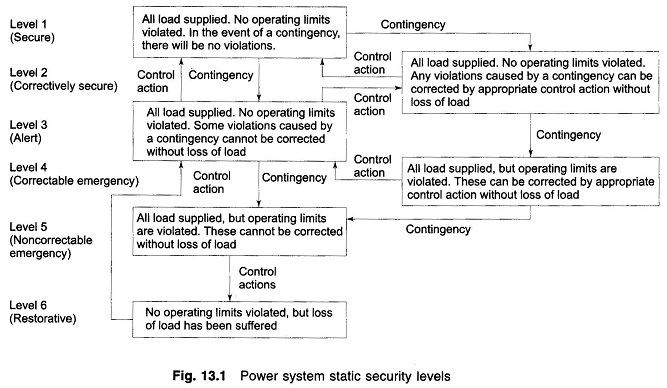Power System Static Security Levels:
A formal System State Classification of power system static security levels was first suggested by DyLiacco and further clarified by Fink and Carlsen in order to define relevant EMS (Energy Management System) functions. Stott et. al have also presented a more practical static security Levels diagram (see Fig. 13.1) by incorporating correctively secure (Level 2) and correctable emergency (Level 4) security levels.
In the Fig. 13.1, arrowed lines represent involuntary transitions between Levels 1 to 5 due to contingencies.
The removal of violations from Level 4 normally requires EMS directed “corrective rescheduling” or “remedial action” bringing the system to Level 3, from where it can return to either Level 1 or 2 by further EMS, directed “preventive rescheduling” depending upon the desired operational security objectives.
Levels 1 and 2 represent normal power system operation. Level 1 has the ideal security but is too conservative and costly. The power system survives ad of the credible contingencies without relying on any post-contingency corrective action.
Level 2 is more economical, but depends on post-contingency corrective rescheduling to alleviate violations without loss of load, within a specified period of time. Post-contingency operating limits might be different from their pre-contingency values.
